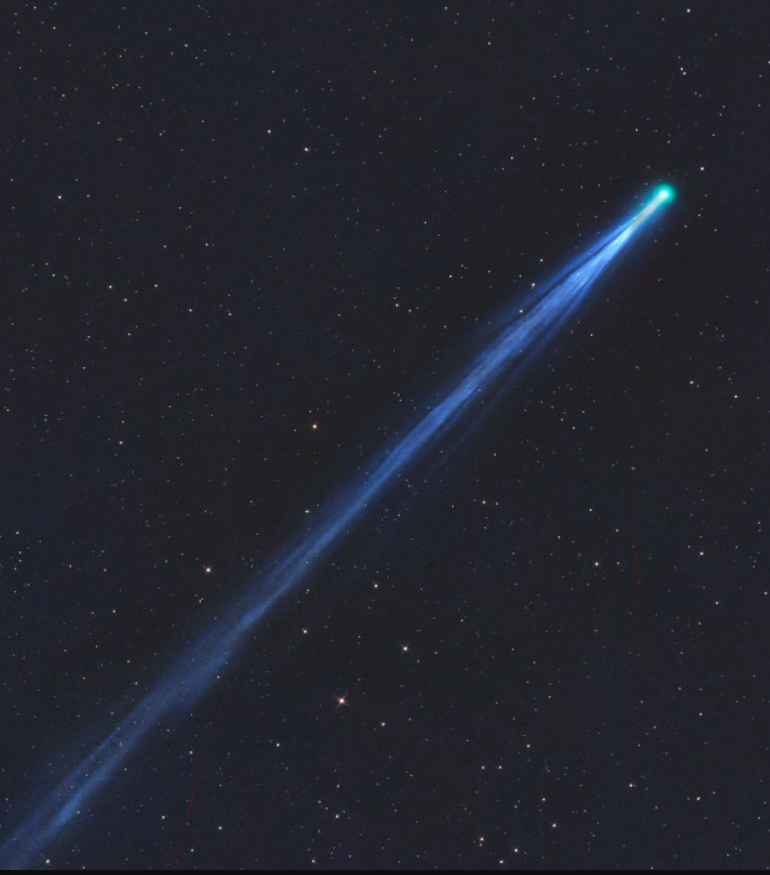Comet Nishimura have fascinated humanity, inspiring awe and wonder as they streak across the night sky, leaving brilliant trails of light in their wake. Among these celestial wanderers, Comet Nishimura stands out as one of the most captivating and recent discoveries in the realm of astronomy. In this article, we will explore the fascinating story of Comet Nishimura, its discovery, characteristics, and the excitement it has generated among stargazers and scientists alike.
Discovery and Naming
Comet Nishimura, also known as C/2022 E1 (Nishimura), was discovered on March 9, 2022, by Japanese amateur astronomer Yuji Nishimura. This remarkable celestial event occurred when Mr. Nishimura was conducting his routine observations of the night sky using a telescope from his private observatory in Shizuoka, Japan. His keen eye and dedication to astronomical pursuits led to the discovery of this comet, making him one of the few amateur astronomers worldwide to spot such an elusive phenomenon.
The comet’s official designation, C/2022 E1, follows the standard naming convention for comets, with “C” indicating that it is a non-periodic or long-period comet. However, it is often affectionately referred to as “Comet Nishimura” in honor of its discoverer.

Characteristics of Comet Nishimura
Comet Nishimura is classified as a long-period comet, meaning that it follows an elongated and highly eccentric orbit that takes it far from the Sun and then back towards it. The characteristics that make this comet unique include:
- Size and Brightness: While comets can vary widely in size and brightness, Comet Nishimura has been observed as a relatively faint object in the night sky. Its brightness may change as it approaches the Sun and develops a visible tail, but it is not expected to become exceptionally bright.
- Orbit: The orbit of Comet Nishimura is highly eccentric, meaning it deviates significantly from a perfect circle. This eccentricity results in the comet spending most of its time in the distant reaches of the solar system, only to approach the Sun and become visible from Earth when it nears its closest point in its orbit.
- Tail Formation: As comets approach the Sun, they heat up, causing volatile materials like water ice to sublimate (turn from solid to gas). This outgassing creates a glowing coma (the comet’s nucleus surrounded by gas and dust) and a characteristic tail that points away from the Sun due to solar radiation and the solar wind.

Stargazing Opportunities
Comet Nishimura has garnered attention from astronomers and stargazers worldwide, offering an opportunity to witness a celestial event that occurs relatively infrequently. To observe the comet, one needs access to a telescope or binoculars and a clear, dark sky away from light pollution. It’s important to consult reputable astronomical sources and charts for the comet’s precise location and visibility times, as these can change as it continues its journey through the solar system.
Scientific Interest
Comets like Nishimura are not only visually stunning but also of great scientific interest. They provide valuable insights into the early solar system’s composition, as they are remnants from that time. Analyzing the composition of comets helps scientists understand the building blocks of our solar system and the processes that shaped it.
As Comet Nishimura journeys through our solar system, astronomers and researchers eagerly await the chance to study this celestial visitor up close. Several scientific questions and objectives drive their interest:
- Cometary Composition: Comets like Nishimura contain a treasure trove of information about the early solar system. Their composition can reveal details about the materials present during the formation of planets and other celestial bodies. By analyzing the gases and dust released by the comet, scientists can gain insights into the chemical makeup of the solar system’s building blocks.
- Activity and Outgassing: Monitoring the activity of Comet Nishimura as it approaches the Sun provides valuable data on the sublimation and outgassing processes. Understanding how comets release gas and dust into space contributes to our understanding of the behavior of these enigmatic objects.
- Impact on Space Weather: Comets can impact space weather conditions, as their outgassing can release energetic particles that interact with the solar wind and Earth’s magnetic field. Studying the interaction between comets and space weather helps us comprehend the broader dynamics of our solar system.
- Comet’s Origins: Determining the origin of Comet Nishimura is another exciting avenue of research. Is it a member of the Oort Cloud, a region of icy objects at the outermost edge of the solar system, or does it have a different origin? Investigating its trajectory and orbit can shed light on its cosmic journey.
Amateur astronomers, equipped with telescopes and cameras, also contribute to scientific observations. Their data and images of the comet complement the work of professional astronomers and enrich our collective understanding of this fascinating celestial event.

The Beauty of Celestial Discoveries
Comet Nishimura’s appearance in our night sky serves as a poignant reminder of the wonders of the universe and the power of amateur astronomers to make significant contributions to science. Yuji Nishimura’s discovery exemplifies the enduring spirit of curiosity that drives individuals to explore the cosmos.
As we continue to monitor Comet Nishimura’s journey, both scientists and stargazers eagerly anticipate the insights it may yield and the awe-inspiring sights it will provide. Whether you’re an amateur astronomer capturing its image or a curious observer enjoying the night sky, the beauty and wonder of celestial discoveries like Comet Nishimura remind us of the boundless mysteries that await our exploration in the vast expanse of space.




































